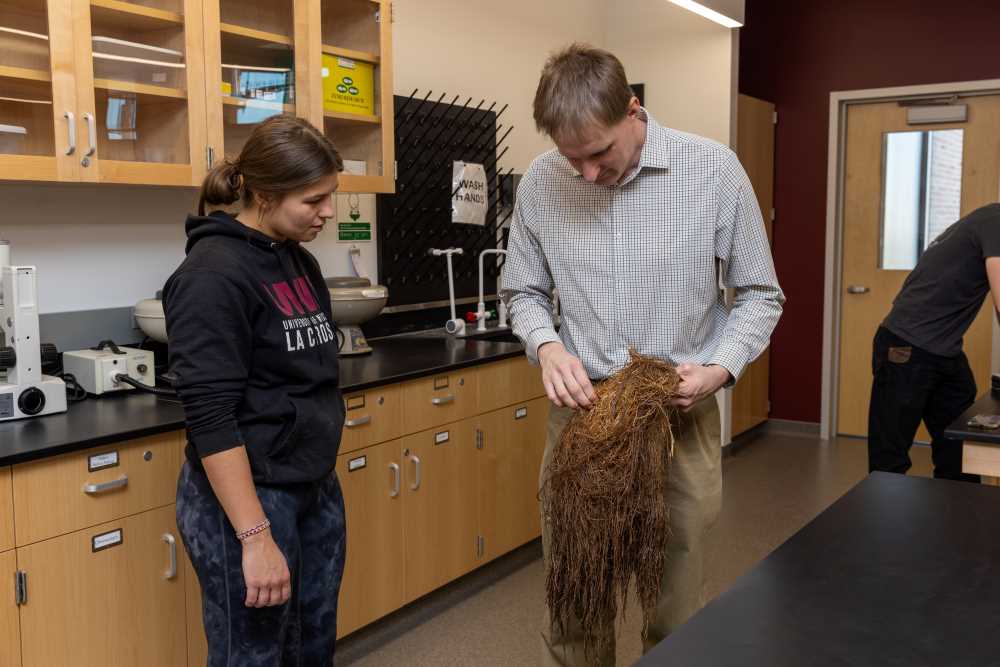Posted 10:43 a.m. Friday, May 9, 2025

Biology students identify unknown plant for City of La Crosse
Over the spring semester, students in Adam Schneider’s plant taxonomy course tackled a real-world challenge for the City of La Crosse — and the results of the experiment are in.
The mystery began last November, when Abby Reichling, a civil engineer contracted with the city, reached out to Schneider with an unusual request: The city had discovered a root growing in one of its reservoirs and wanted to identify the species and understand its growth potential.
Seeing a unique learning opportunity, Schneider transformed the request into a class project, giving students a chance to apply their scientific knowledge in a hands-on way.
Their research revealed the root belonged to Populus deltoides, commonly known as the eastern cottonwood, a fast-growing tree and one of the largest hardwood species in North America.

For junior biology major Elena Kozich, the project offered a deeper, more unpredictable challenge than past coursework.
“Every time I’ve done DNA barcoding before, the steps were already laid out, with little room for error,” Kozich says. “But in this project, we started from square one. We didn’t know what we were looking for, so it was cool to figure things out step by step and problem-solve along the way.”
While Kozich was familiar with DNA barcoding, learning to use barcoding software was a new skill.
“Now that I know how to work with the software, I can apply it in field research and other professional settings,” she says.

For senior Maria Jerabek and junior Tavian Laufenberg, the project also offered valuable experience — even if it did not align directly with their career goals.
Jerabek, who plans to pursue forensic science, said the project helped build her confidence with barcoding work and provided a strong foundation for analyzing genetic data, something she expects to encounter in her future studies.
“This experiment helped me realize that my confidence is growing,” Jerabek says. “The skills I learned here will be useful in projects more closely tied to my field, like identifying DNA in crime scenes.”
Laufenberg, who is preparing for a career in pharmaceutical science, appreciated how the project went beyond entry-level lab work, offering students a chance to make a real-world impact. Their research has already been shared with the City of La Crosse, allowing officials to move forward with planning and next steps.
“I found it really intriguing how we started with a clump of roots and figured out exactly what species it was,” Laufenberg says. “It was exciting to contribute to something bigger than a classroom experiment and get the ball rolling for the city to address the issue.”
